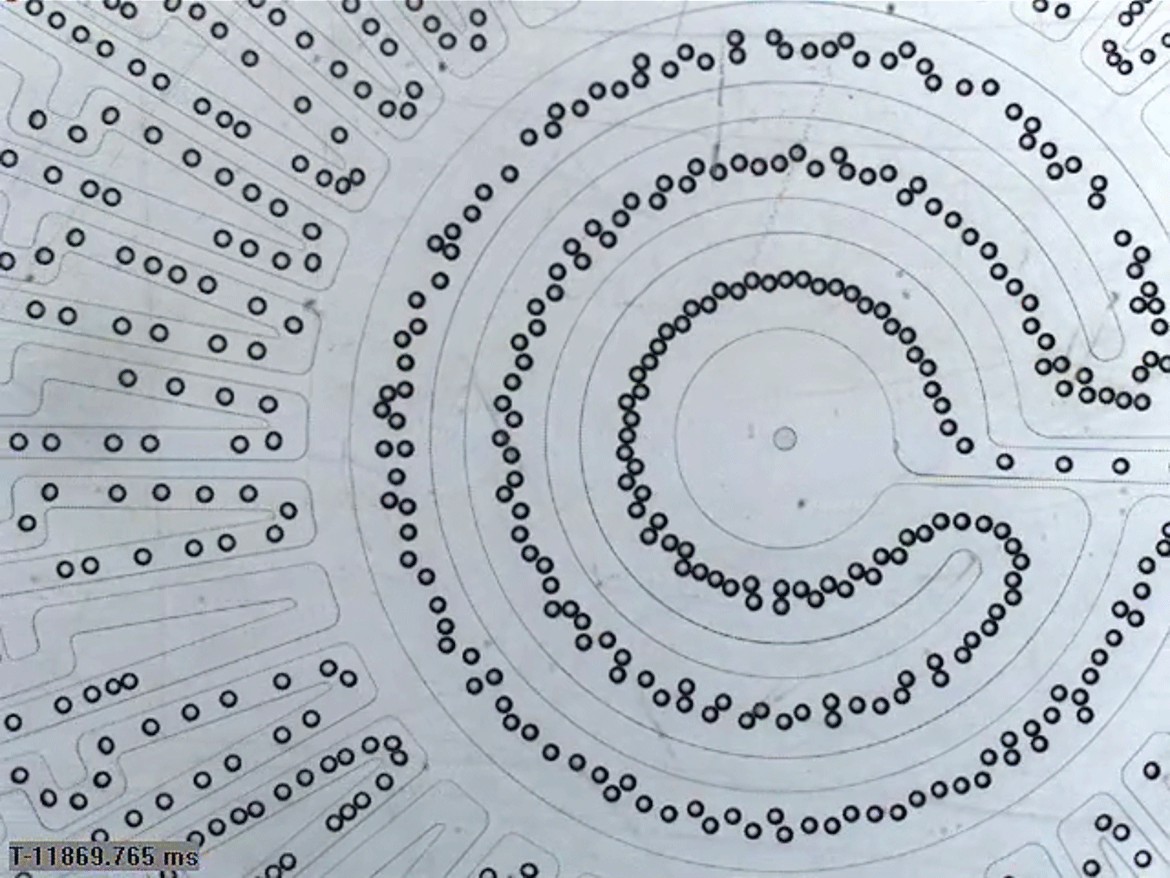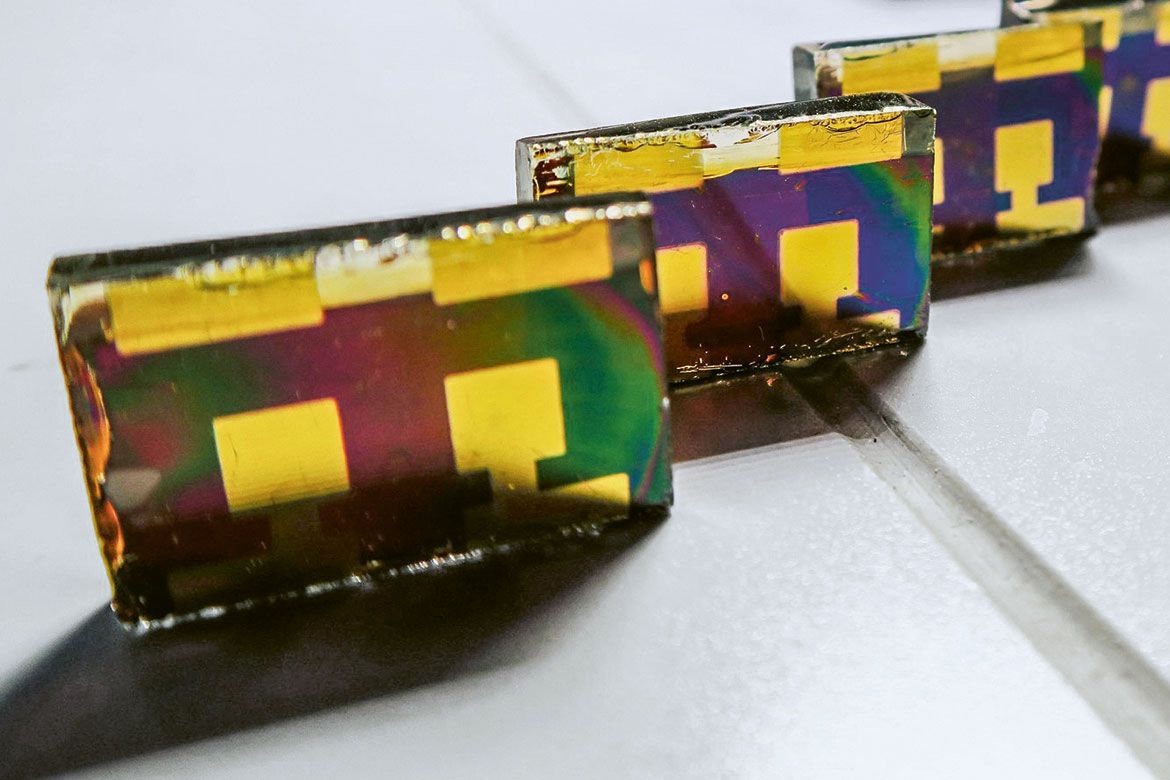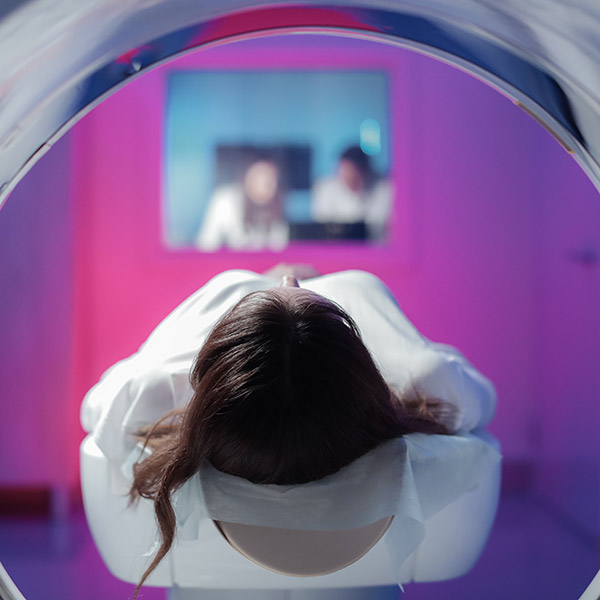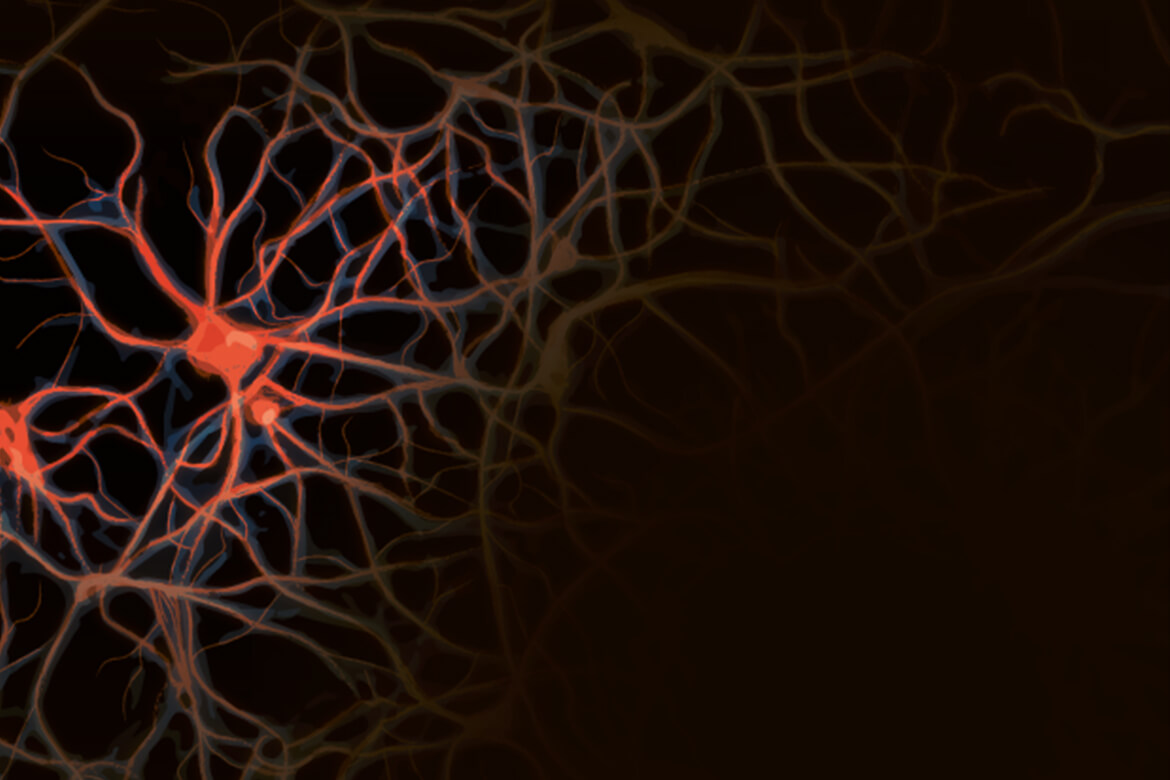Synthetic biology
Made-to-measure cells
Biophysicists and biochemists can now adapt cells to their needs. This could help to cure diseases, and maybe even allow for the manufacture of electronic components. We’ve taken a closer look at these new possibilities.

Droplets of fat are flowing through this microscopic system of channels. Similar systems are used to recreate cellular processes. | Image: Schaerli Lab
The pharmaceuticals factory of the future will comprise a plastic chip with tiny conduits and chambers milled into its surface. Researchers will then channel tiny droplets of fat along it in order to produce structures that resemble cells. It will be like a conveyor belt: step by step, the droplets will be packed with proteins and active substances.
“We want to replace natural cells or components with more simplified, artificial cells that are equipped with precise functions for treating specific diseases”, says Ilia Platzman, a biophysicist at the Max Planck Institute for Medical Research in Heidelberg.
Mimicking Nature
Platzman and his team have been using this method to create droplets of fat containing substances that could transmit a signal to heal wounds. He got the idea from the natural world, where cells in injured tissue communicate with each other using similar little bubbles called vesicles.
The microfluidics described above have an important role to play in this approach to synthetic biology, where cells are assembled from scratch from individual components. “This technology enables us to have precise control over the assembly process”, says Platzman. It’s especially important for medical applications that all the vesicles are the exact same size and have the same composition.
“Of course, such vesicles are not yet proper functioning cells”, says Platzman. “Perhaps they could be more accurately described as synthetic, cell-like robots”. They are unable to divide, for example, and cannot generate their own energy. But even here, progress is being made. Researchers have meanwhile succeeded in producing membranes that can shield a cell from what’s outside it and can create different sections inside the cell – just like the mitochondria that provide cells with energy. And progress is also being made in mimicking the scaffolding that gives cells stability and helps the process of cell division.
Martin Fussenegger is a biotechnologist in the Basel-based Department of Biosystems Science and Engineering of ETH Zurich. He remains sceptical about whether we will truly succeed at some future point in constructing more complex cells from individual components: “For certain applications, such systems are certainly justifiable. But in my opinion, it’s quite impossible to employ a rational approach in hopes of achieving the complexity otherwise created by millions of years of evolution”.
An endogenous insulin pump
Many researchers – Fussenegger among them – are therefore pursuing a different approach. They don’t start from scratch, but base what they create on existing, natural cells to which they add further, custom-made features. The CAR-T cell therapy against cancer is a pioneer in this field that has already been used successfully. Here, the body’s own immune cells are removed from the person affected and then genetically modified so that they form artificial receptors on their surface. Once they are placed back in the body, these receptors find the cancer cells and destroy them.
Fussenegger also aims to be able to convert the body’s own cells for therapeutic purposes with the aid of synthetic circuits that can switch genes on and off as needed. People with type-1 diabetes offer an example of how this might one day work in practice. The beta cells of their pancreas are no longer able to produce insulin, so to avoid the dual dangers of hyperglycaemia and hypoglycaemia, they have to measure their blood sugar several times a day and inject the right amount of insulin.
Fussenegger and his team have been able to modify body cells in vitro so that they automatically start producing insulin when there is a high sugar concentration in their environment. To achieve this, all they had to do was to take two genes that occur naturally and introduce them into a cell to reprogram it. One gene contains the blueprint for the channel in the cell membrane that transports calcium into the cell when there is a high concentration of sugar. The other gene contains the blueprint for insulin and is activated by calcium. In diabetic mice, these modified cells have actually managed to maintain a balance between sugar and insulin.
Cells as sensor and drug, all in one
Cells can be repurposed to treat many other diseases by using this same principle. “Ideally, the cell will recognise a metabolic product that signals a specific disease, and thereupon produce a protein to counteract this disease. In such systems, the cell is both sensor and drug at the same time, so no external signal is needed to trigger the production of the drug, to provide the right dose of it, or stop its production.
Fussenegger is also working on cells that can use signalling substances to spot the onset of an allergic reaction and then release a protein with anti-allergenic properties. This could mean that allergy sufferers would no longer need to swallow pills. In fact, they might not even notice that an allergic reaction was taking place in their body, because it was being nipped in the bud. Other research groups in Fussenegger’s department are adapting cells so that they can detect cancer cells and fight them.
“These systems aren’t some ingenious invention on our part. They simply function the same way Nature does”, says Fussenegger. “After all, our bodies aren’t constantly producing ‘happy hormones’ or pain-relieving substances. We produce them only when they are really needed”. This also provides his methods with a clear advantage over conventional drugs that have to be taken at a fixed dosage. At present, it remains to be seen whether or not this method will also work in humans. Nor is it clear what kind of body cells would be best suited for it, and how long such cell ‘reprogramming’ in the body would actually last.
There’s gold in that thar slime
Yolanda Schaerli is a professor of synthetic biology at the University of Lausanne and a member of the Swiss National Centre of Competence in Research (NCCR) Microbiomes. She’s pursuing an idea that sounds no less futuristic. Her aim is to convert bacteria into new types of biomaterials. “Not only would they be sustainable and biodegradable, but they could also repair themselves through regeneration”, she says. The starting point for her project is the slime layer with which bacterial colonies surround themselves. These biofilms are already being used today to purify wastewater in sewage treatment plants. Schaerli and other research groups have meanwhile been investigating how the bacteria in these biofilms communicate with each other, and how their behaviour differs depending on the time and place.
By incorporating synthetic switching circuits, researchers have now reached a point at which bacterial communities behave according to an artificial, predetermined pattern. For example, Schaerli has designed a genetic circuit that works like a light switch. To prove it, she has created bacteria that glow either green or red, depending on the position of the switch.
These are still just clever tricks. “But instead of producing green and red colours, we can also program the bacteria to carry out other, more useful functions”, says Schaerli. For example, she is developing biofilms for electronic applications. To this end, she is modifying the gene for proteins in the bacteria’s extracellular mucus layer so that it can adhere to gold particles that conduct electricity.
In this way, researchers can create a kind of electroconductive pathway on a biofilm. It is also conceivable that they could incorporate elements that would detect specific pollutants and then break them down. “Evolution has produced what is useful in Nature. But these are not necessarily the properties that we would like for our applications”, says Schaerli. Synthetic biology now aims to close these gaps.




